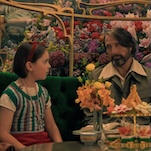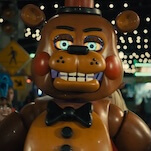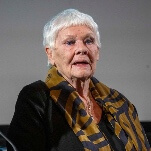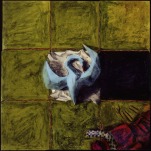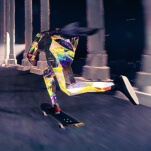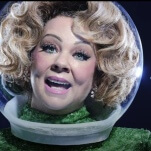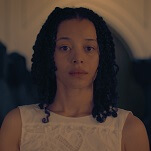The Love Bunglers preaches the gospel of Maggie Chascarillo
Each week, Big Issues focuses on newly released comic books of significance. This week, it’s The Love Bunglers. Written and drawn by Jaime Hernandez (Love And Rockets, This Is How You Lose Her), this graphic novel is the culmination of 30 years of stories surrounding Maggie Chascarillo, one of the greatest creations of the modern era of comics.
When people are engaging with a story, they’re building emotional relationships with the characters that grow as the narrative continues. Soap opera fans are fiercely loyal, because they’ve been watching the characters for an extensive period of time, and seeing the cast age builds an even stronger connection between the audience and the ensemble. Teenagers watching a soap opera will see the adolescent members of that cast mature into adults while they mature in the real world, so there’s a sense of growing up with the characters. These fictional figures become friends in the sense that they are people who share their life experiences with you and offer emotional gratification in return for your attention (it’s a very one-sided friendship), and just like any relationship, it becomes stronger as more time is devoted to it.
A similar type of dynamic is born from the extended serialized storytelling in ongoing superhero comic books, but at a certain point the aging of those characters slows to a crawl (assuming they’re not rebooted completely). Superheroes are allowed to age from teenagers to adults, but its rare to see those adult heroes get to the point where they have wrinkles and paunches and cellulite. Characters like Dick Grayson and Kitty Pryde have giant fan bases, because readers have seen them evolve over time and grown along with them, and yet while those characters may change in the future, they’ve both reached the point where they won’t be visually aging any time soon.
For comic readers looking to make complex, meaningful relationships with characters that never stop growing, there are over 30 years worth of Love And Rockets stories waiting to be absorbed. In the pages of this ongoing alternative series, brothers Jaime and Gilbert Hernandez have built two distinct worlds that are sprawling in scope yet remarkably intimate, exploring Latin American and Mexican culture through beautiful, sophisticated stories with universal appeal. The passage of time is an essential component of the success of Jaime’s The Love Bunglers, a gorgeous new oversized hardcover from Fantagraphics collecting a story originally published in Love And Rockets: New Stories #3 and #4, and the narrative wouldn’t have the same impact if it didn’t have decades of history behind it.
Perla Luisa “Maggie” Chascarillo debuted in 1982, and over 32 years, she’s been the best fictional friend a comic-book reader could have. As the central protagonist of Jaime’s half of Love And Rockets, Maggie has undergone an astonishing transformation from punky young mechanic to middle-aged apartment complex landlord, a journey paved with a wealth of incredible stories. As a rebellious young adult, Maggie embodied the antiauthoritarian urges of adolescence, with an appearance that gave her the adorable appeal of the female characters of Don DeCarlo and John Romita Sr. Jaime refined his style as Maggie matured, becoming more economical with his linework as Maggie settled into the routine of adulthood, and seeing Jaime’s artistic evolution is as captivating as Maggie’s endless romantic troubles. To experience Maggie’s story is to watch a modern comic-book master explore the potential of his craft, and The Love Bunglers represents a high point for both the character and her creator.
At the start of The Love Bunglers, Maggie is alone. Her longtime best friend and on-again/off-again girlfriend Hopey Glass has a new partner, and her last fling involved the woman that her ex-boyfriend Ray Dominguez is hopelessly infatuated with. As Maggie walks home, she is noticed by a man from her past who will have huge ramifications on her future, and The Love Bunglers explores his story while chronicling the next stage of Maggie and Ray’s relationship. The two threads collide in a moment of tragic violence stemming from horrific childhood trauma, and the buildup to that event showcases Jaime’s talent for pulling readers into a plot with immensely deep, honest characterizations and relationships.
Maggie may only exist as lines on a page, but she feels real. She has specific personality quirks, but she can’t be easily defined, and time has had a visible impact on her appearance. She puts on weight, her posture worsens, and wrinkles start to appear on her face, and the gradual changes in these visual elements have allowed Jaime to capture the passage of time organically without needing to directly address specific dates. Maggie has a body type that doesn’t appear very often in comics, and her confidence with her appearance is a huge part of her charisma; she’s a woman that is proud of her figure, which makes her even sexier to those around her.


